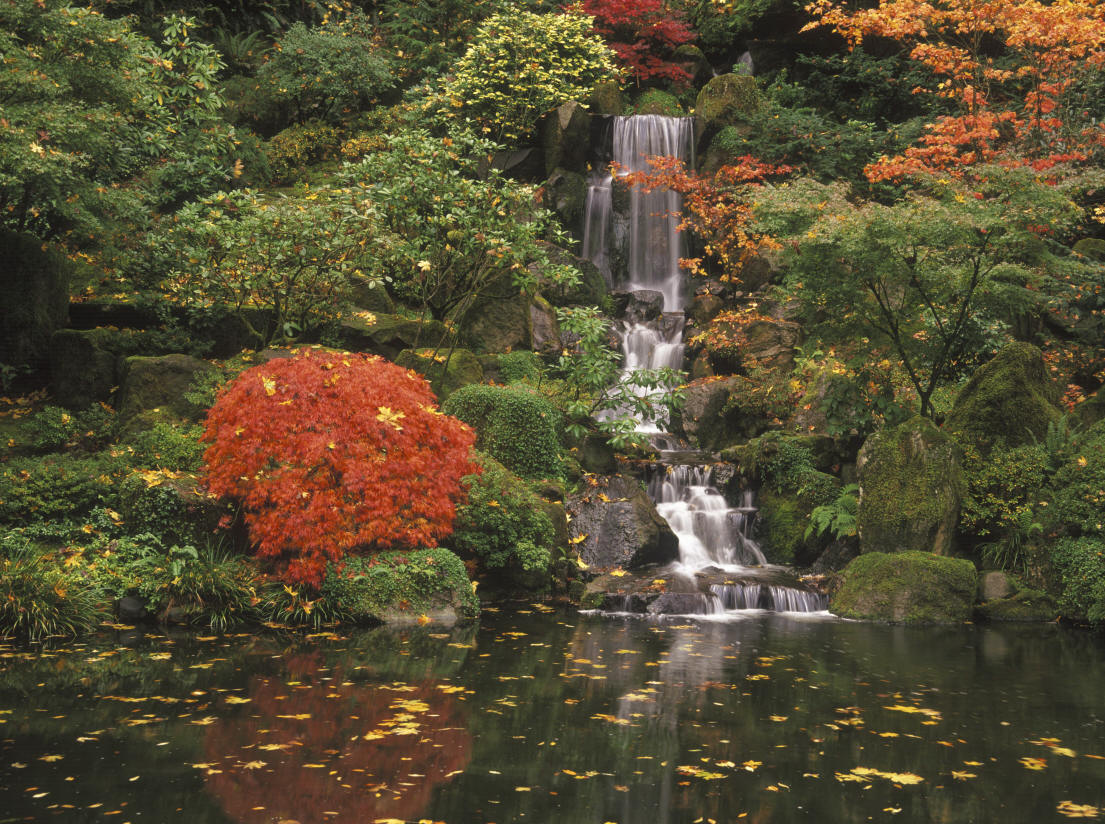
 The art of Japanese gardens have been believed to be one of the most important parts of Japanese culture for many centuries. The garden design in Japan is strongly connected to the philospohy and religion of the country. Shinto, Buddhism and Taoism were used in the creation of diffrent garden styles in order to bring a spiritual sense to the gardens and make them places where people could spend their time in a peaceful way and meditate.
The art of Japanese gardens have been believed to be one of the most important parts of Japanese culture for many centuries. The garden design in Japan is strongly connected to the philospohy and religion of the country. Shinto, Buddhism and Taoism were used in the creation of diffrent garden styles in order to bring a spiritual sense to the gardens and make them places where people could spend their time in a peaceful way and meditate.
The history of the Japanese gardens goes back to around the 7th century. The first Japanese gardens, that expressed Shinto, Buddhism and Taoism visions can be traced back to the Asuka Period. They were disigned to capture the landscape in its natural form. From this period the basic rules of designing gardens was established.

Heian Period is the second very important chapter in the development of Japanese garden art. Aristocratic style of gardens where created in front of the mansion with artificial ponds and islands. Thats were water poetry ceremonies were held. Heian Period is also know as the time when the first book about garden-making technique was written.
During the Kamakura Period and Muromachi Period garden-making techniques improved considerably because of the rise of the Zen style. Many gardens designed in that time were properties of succesive shoguns and daymios, who belong to the highest class in Japanese society. Famous gardens created after Meiji Period were frequented by business people and politicians. Most of them are opened to the public now and play a role in city parks.
The design of traditional Japanese gardens has a strict guideline. The major guidelines while creating a garden:
The design of the Japanese gardens is based on the principles of symbolization. Its essential elements have different meanings:
Traditional Japanese gardens can be categorized to the five basic types:
Hill and Pond Style Gardens that originated from China. The ponds represent the sea, and the hills symbolize the islands. Lanterns, trees, bridges, and ponds are practically necessities here. They vary in size, usually cover many acres, but with careful techniques, it can be created in a small backyard.
Dry Landscape Style Gardens are very simple and modern-looking, usually placed in a very small area. They reproduce natural landscapes in a more abstract way by using stones, gravel and sand onto mountains, islands and rivers. They refer to the Zen philosophy and usually try to evoke a deeper meaning.
Tea Style Garden has a very intimate atmosphere and are meant to provide a relaxation from a person's busy lifestyle. They are designed for the tea ceremony. They contain a tea house where the ceremony is held and a stone basin where guests can purify themselves before participating in it.
Stroll Style Gardens that are meant for viewing from the path and that is why they never reveal the whole garden's beauty from one spot. They must be big enough to enable visitors to walk along the path and spacious at the same time to allow the path to take turns.
Courtyard Style Garden follows the rule of having an outside sensation while still being inside. Apart from other styles, everything here must be full-sized. All elements, as lanterns, bridges, basines have ornamental rather than a functional meaning.